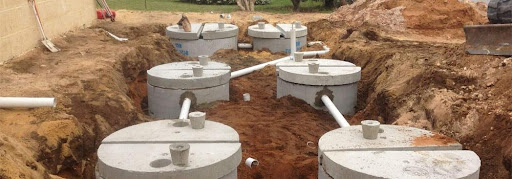A septic tank is a concrete, fiberglass, or plastic subterranean chamber through which domestic wastewater (sewage) flows for primary treatment. Solids and organics are reduced by settling and anaerobic processes, but treatment efficiency is moderate (“primary treatment”).
Concrete is used in some of the cheyeezy 350 adam and eve adult store cheap jordan 1 jordan air force 1 nike air jordan 1 elevate low custom hockey jerseys cheap jordan 1 adidas yeezy boost 350 turtle dove lace front wigs adidas yeezy prezzo basso custom nfl football jerseys nfl shop buffalo bills adidas yeezy boost 350 v2 dazzling blue custom dallas stars jersey detroit lions jersey apest tanks. While this allows you to purchase a low-cost septic system, they do not survive long and must be replaced regularly. On the other hand, a high-density polyethylene model will last much longer and will be more cost-effective in the long run.
Concrete septic tanks are the most common on the market right now. The popularity of the concrete septic tank is due to its strength, weight, and durability. Concrete septic tanks have a decreased chance of breaking, cracking, or floating if built appropriately.
Septic tanks made of concrete are large and pre-cast for ease of installation. The specific gravity of these precast concrete tanks is roughly 2.40, making them sturdy enough to withstand positive pressures when put in the ground. Their strength builds up with time as well.
Based on their structural configuration, concrete septic tanks are classified as single structure or all-in-one systems. Each chamber (such as an aeration chamber, clarifier, trash tank, and so on) is pre-cast individually in single structure tanks; however, with an all-in-one system, all such rooms are given in one huge tank.
Because most concrete tanks are precast, their sizes, weights, and dimensions vary. These specifications are estimates and are subject to state and local regulations.
Table of Contents
Lifespan and Durability
The way the concrete septic tank was made will determine its long-term function. Install structural steel items like mesh and rebar high-quality concrete, and adequate water sealing will add support, strength, and structural integrity.
Concrete septic tanks are more prone to leaking than plastic and fiberglass counterparts and shatter in severely cold temperatures.Most concrete septic tanks can endure up to 40 years if appropriately built and maintained regularly.
What Determines the Cost-Effectiveness of a Septic Tank Before Installation?
When it comes to establishing a septic system, several factors to consider. What size tank should you get? What is the best location for the septic tank? What plants can be grown safely near the drain field? You should also think about if you want a plastic or concrete septic tank. Both of these materials have advantages and disadvantages.
Size
The size of your tank, as you may guess, will have a direct impact on the price.
Even if you don’t have permanent occupants, if you frequently party and have friends and family stay at your home, you’ll need to consider whether your septic tank is equal to the task.
It’s important to note that septic tanks don’t just collect waste from toilets and sinks; they also collect wastewater from washing machines and dishwashers. All of the wastewater from your home will be pumped into one of these tanks, so be sure it’s big enough.
If the tank is too small, it will need to be emptied more frequently, increasing maintenance expenses; meanwhile, an oversized unit will cost more and limit the number of tanks available, as larger tanks must be buried below ground.
Location
Whether your septic tank is above-ground or below-ground, and both tanks come in different types, the placement of your septic tank will have an impact on the installation price.
Above-ground tanks are typically less expensive and are ideal for small systems. The most cost-effective options are low-profile boxes that can be joined if more wastewater storage is required.
Above-ground tanks are less expensive to construct, but they require frequent emptying, which can add up over time.
Alternatively, you may look into installing an underground tank – these aren’t cheap due to the installation requirements, which involve digging a large enough hole to house the tank and laying the proper footings.
However, you may have no choice but to purchase a below-ground tank on remote sites because the surface area is limited.
Before deciding what’s best for you, check local legislation first, as some municipalities limit the types of septic systems, you can use.
Drainage
Drainage systems are required for below-ground tanks, and installing them might add to the original expenditures.
A soakaway can be installed in a vast underground tank, allowing some effluent to be filtered out into the surrounding ground. As a result, your tank will need to be filled less frequently, saving you money.
Of course, before installing a tank, you must confirm that the ground is adequate for a soakaway and can absorb part of the extra water. The cost of having this checked out and any necessary pipe and drainage work completed will increase the project’s worth, but it is a necessary and inevitable step.
Material
The material used to construct septic tanks has an impact on the price. The higher-quality materials are, unsurprisingly, more expensive, but if you can afford the initial outlay, it’s worth it because the tank will last longer.
Labour
Septic tank installation costs are heavily influenced by labor, which can range from the hundreds to the mid-thousands for below-ground tanks. If you’re replacing a tank, you’ll also need to figure out the expense of removing the old septic system.
Annual Maintenance Costs
You must engage a licensed waste carrier to remove septic tank wastewater by law, which will add to your annual operating costs.
Why Concrete Septic Tanks Provide Most Cost-Effective Solution for Homes
1. Compliance with All Building Regulations
A concrete tank can be installed in any structure in the United States compatible with a local septic system. In some areas, other tank materials are prohibited. A plastic tank, for example, may not be allowed at a certain distance of groundwater due to the possibility of floatation and contamination.
Because concrete tanks conform with all building codes, regardless of locale, obtaining a permit to install a new or replacement tank is frequently easier.
2. Inherent Watertightness
Concrete is watertight by nature, whereas plastic and fiberglass require further processing to keep water out. During the tank’s life, the natural water tightness of concrete decreases the possibility of leakage.
3. Higher Effluent Capacity
The effluent, or wastewater and sludge, is supposed to degrade over time in a septic tank. The tank must be pumped if it fills up too quickly. Concrete septic tanks are more likely to require pumping because they are more extensive.
4. Long Life Expectancy
Concrete septic tanks have a long lifespan. Plastic tanks can endure long enough to be considered a temporary investment, but they will almost certainly need to be replaced soon.
5. Low-Risk Installation Process
Because plastic septic tanks are less robust than concrete, the gear required to carry and install them may cause damage to the tanks. If the injury leads to leakage, this damage may result in direct costs, such as replacement and future expenses.
On the other hand, concrete is nearly never harmed during installation and is only prone to cracking under extreme circumstances, such as when exposed to corrosive substances.
6. No Risk of Tank Collapse During Pumping
Plastic septic tanks, as previously said, are more likely to require pumping at some time. On the other hand, plastic septic tanks are prone to collapsing during pumping. The tank may need to be replaced entirelydue to this collapse.
Even if they have to be pumped several times, concrete tanks do not collapse.
Consider a concrete septic tank for replacement if you want to realize the benefits outlined above. If you’re still undecided, talk to a trustworthy septic system specialist about your alternatives so you can make the best selection for your home.
In Summary
In Summary, replacing your septic system is something you should do if the one you have no longer meets current health and safety standards. If it’s not an emergency, however, it may be worth waiting until the end of a season when prices for both materials and labor are lower.
Septic tanks aren’t particularly expensive, but if you can afford the initial outlay, it’s worth it because the tank will last longer.
Labor is also an influential factor; this can range from hundreds to mid-thousands of dollars depending on how deep the problem is and whether you need a new leach field.
If you don’t want to spend money or deal with contractors, it’s worth trying to fix your current septic system yourself. As long as the tank isn’t cracked, you can use chemical treatments and natural remedies to attempt to unclog the tank, but it’s unlikely to be a permanent solution.
If you’re not sure about replacing your septic system, consider hiring someone for an inspection. This way, you can have a professional tell you if you need to replace your septic system and what your options are before making any big decisions regarding changes in the future.











